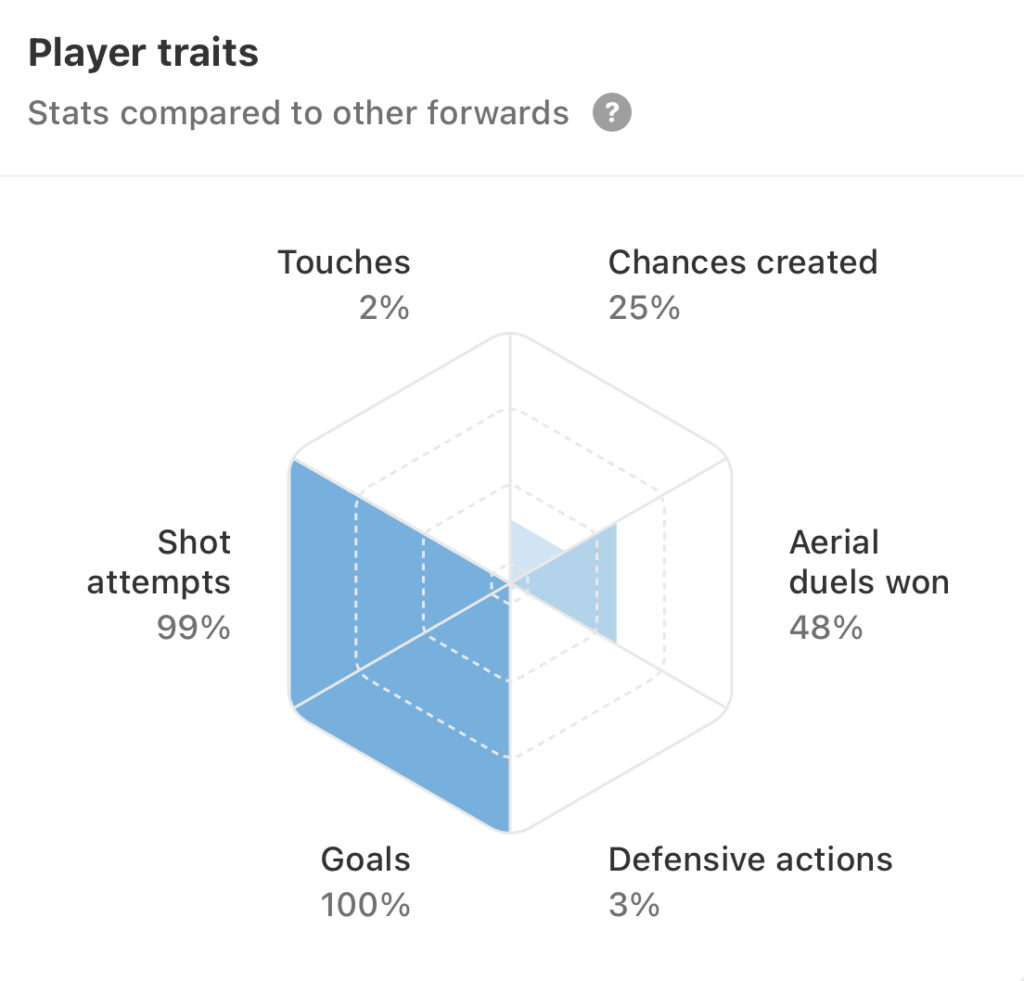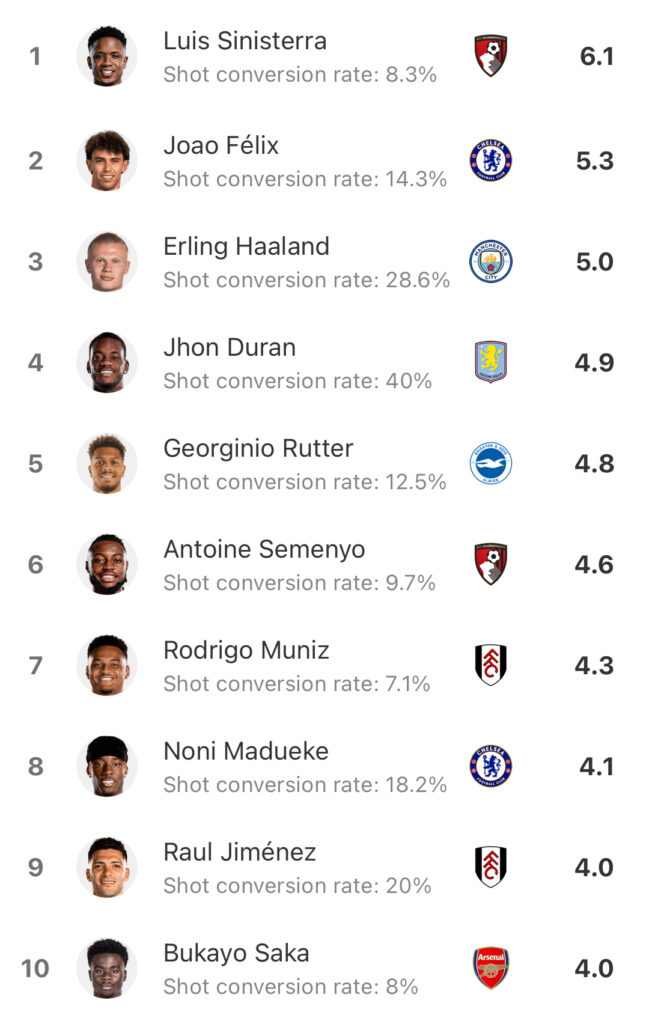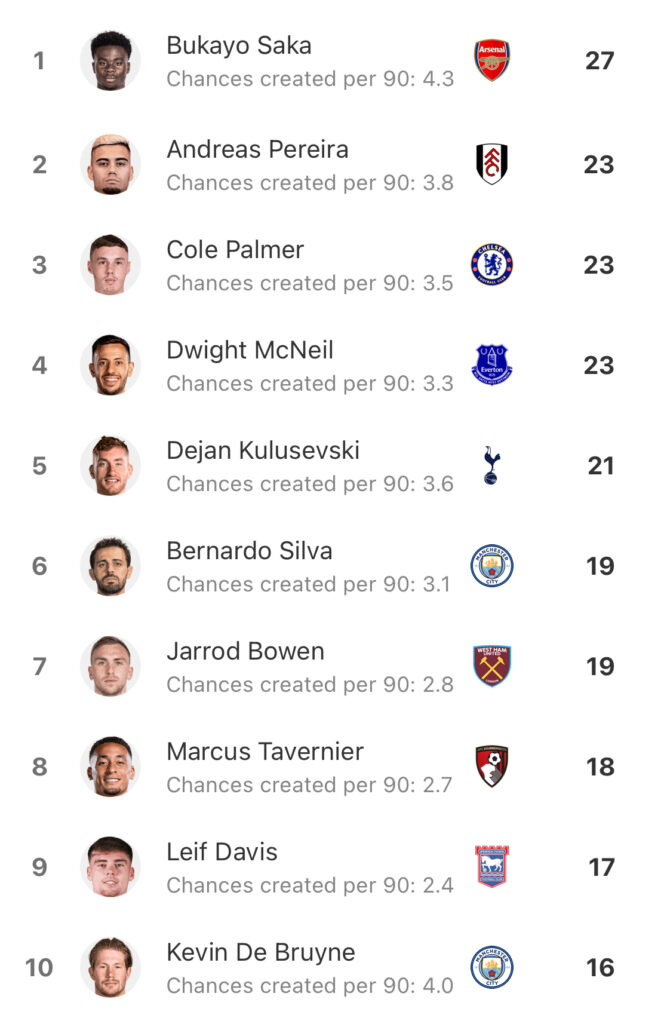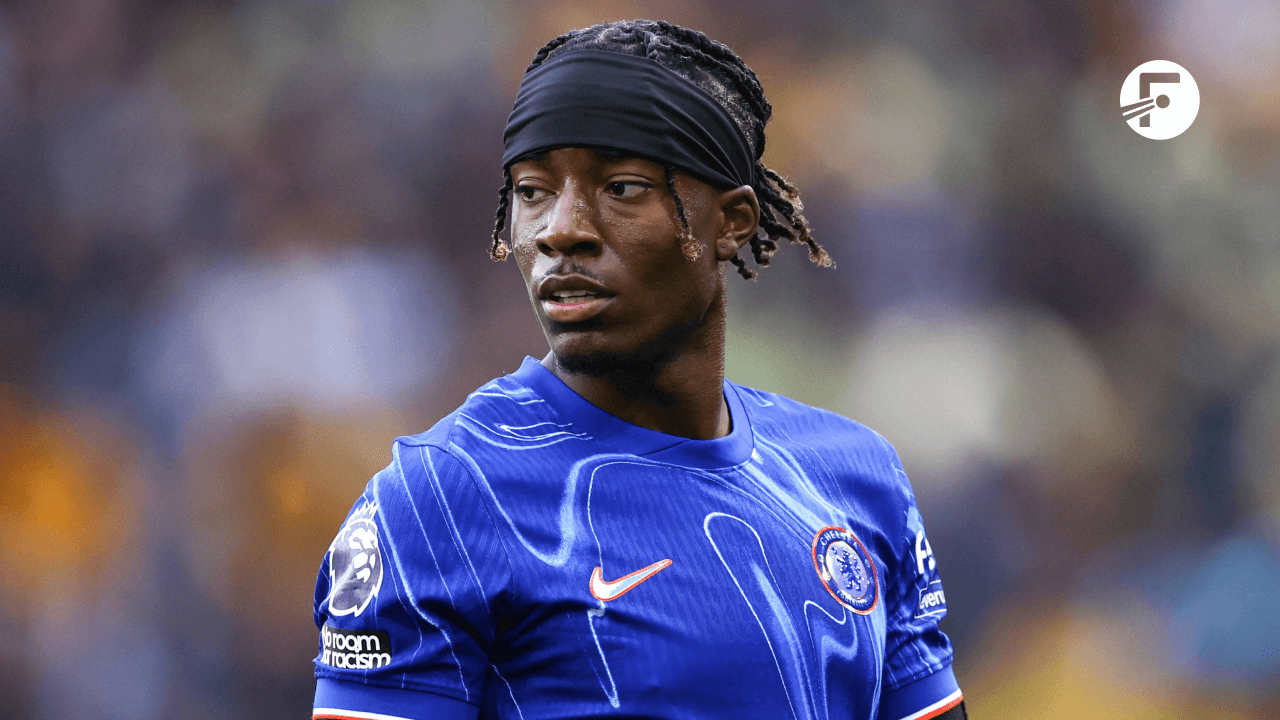We are long-since passed the days of two up top in English football, the quintessential pairing of strikers which was the hallmark of the old First Division and even the Premier League’s formative years.
We’ve circled a long way since then, and have basically arrived back there once more in a very different way: split attackers, one up and one off, pressing as a two before one drops into midfield. However you look at it, clubs mostly play with just one centre-forward these days…and one statistic in the Premier League this year shows how they are very much not the focal point of the attack.
Of course, centre-forwards come in all shapes these days. They are facilitators, chance-makers, ball-carriers, high-pressers; they must be the first line of defence as much as the players who are expected to score. And yet, in the main, they are not the players taking the most shots. Strikers they may be, but others are doing that job way more often.
In fact, in the Premier League through seven rounds of matches – approaching 20% of the season – there are just four out of the top 20 players who are recognised strikers, when ranked by shots per 90 minutes on the pitch.

And when considering one of those is Erling Haaland (5.0 per 90), who is of course off the charts in most respects to the extent that he should be considered an anomaly, it’s even more stark – then there’s the fact two of the others play for the same team, with Fulham’s Rodrigo Muniz (4.3) and Raúl Jiménez (4.0) dovetailing in the role this term, but both getting plenty of shots away regardless. The other striker is Aston Villa’s Jhon Durán (4.9), who has made such an impact this term, but from the bench: he’s had only 184 minutes of league action so far, compared to Haaland for example with well over 600. There’s a big difference in doing it consistently, game after game, rather than hammering in a few shots in a 20-minute cameo, which boosts the per-90 average considerably.
But that is it for what might be termed true No. 9s.
Leading the way of all players is Bournemouth’s Luis Sinisterra (6.1), but he’s another – as is João Félix (5.3) who have few minutes and a handful of shots and therefore a high average at this stage. Neither lead the line, though: the former attacks from wide, the Chelsea sub from deep, often a second attacker late in games under Enzo Maresca. Again, Haaland is out on his own when it comes to real starting players. Yet they provide the trend for what follows them: a host of starting wide forwards who are teams’ primary focus in creating and taking chances on goal.

Antoine Semenyo, Noni Madueke and Bukayo Saka are all in the top ten, all averaging over 4.0 shots a game and all playing from wide, cutting in, unleashing hell. Eberechi Eze and Cole Palmer are not far behind, England internationals playing a narrow supporting role at club level this term, plus outright winger threats such as Brennan Johnson and Harvey Barnes can be found in the top 20. Of course Mohamed Salah is there, lower shot numbers than in previous years but with the best conversion rate (18%) of genuine, undisputed first-choice players outside of Haaland (28%) and Palmer (25%). Kai Havertz is one final example of a player who is generally not a striker, but often playing No. 9 this season for his side… and yet, not always, and not as the highest player in the team during attacking buildup play.
And yet the numbers to underline the notion that teams are more and more focusing on getting their wide and secondary attackers into the most dangerous positions is only reinforced when we step away from the shots per 90, and look at chances created: Saka, Palmer, Salah and Eze are all in that top 20 too, as are fellow width-bringers Jarrod Bowen, Marcus Tavernier, Anthony Gordon and Dwight McNeil. At least two of those play centrally this season too, but as attacking midfielders, not forwards. In the top 20 by chance creation, only Bryan Mbuemo could reasonably be labelled a striker, and he certainly plays wide as much as not.

While we’re not exactly asking the question of what are strikers doing then? it’s still fair to summarise that they no longer play the most critical role for managers’ plans when it comes to the final third of the pitch, and how to breach the opposition defence. Just like the role of defensive midfielder, of a team’s No. 10, of what a full-back is and what their role in build-up play has become, the centre-forward is every bit as changeable and subject to finding a new way to thrive – it’s just that now, it’s not necessarily to be the main finishers.
(Cover image from IMAGO)
You can follow every game from the Premier League with FotMob this season – featuring deep stats coverage, xG, and player ratings. Download the free app here.
